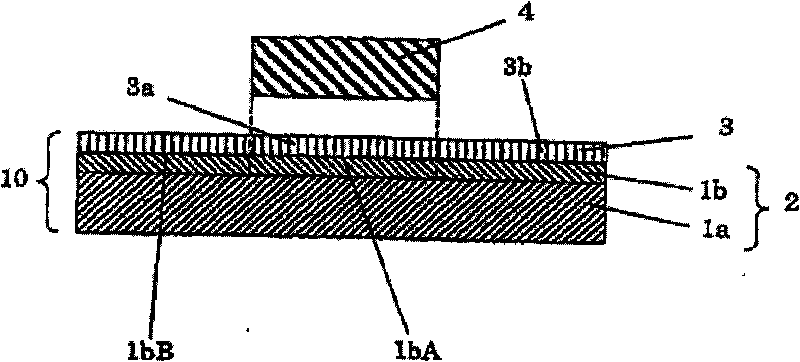Dicing die-bonding film and process for producing semiconductor device
A bonding film and cutting film technology, which is applied in semiconductor devices, semiconductor/solid-state device manufacturing, electric solid-state devices, etc., can solve the problems of large semiconductor chips, difficult to pick up semiconductor chips, and difficult to prepare cutting die-bonding films, etc. Achieves the effect of improving low pollution and excellent balance characteristics
- Summary
- Abstract
- Description
- Claims
- Application Information
AI Technical Summary
Problems solved by technology
Method used
Image
Examples
Embodiment 1
[0177]
[0178] Acrylic polymer X was obtained by mixing 95 parts of 2-ethylhexyl acrylate (hereinafter referred to as "2EHA" in some cases), 5 parts of 2-hydroxyethyl acrylate (hereinafter referred to as "HEA" in some cases), ”) and 65 parts of toluene were charged into a reactor equipped with a cooling pipe, a nitrogen gas introduction pipe, a thermometer and a stirring device, followed by polymerization treatment at 61° C. for 6 hours in a nitrogen stream.
[0179] Acrylic polymer Y was obtained by adding 24.1 parts of 2-methacryloxyethyl isocyanate (referred to as "MOI" in some cases) (90 mol % based on HEA) to 100 parts of acrylic polymer X , followed by an addition reaction at 50°C for 48 hours in an air stream.
[0180] Next, a pressure-sensitive adhesive solution of an active energy ray-curable pressure-sensitive adhesive was prepared by mixing 3 parts of a polyisocyanate compound (trade name "COLONATEL", manufactured by Nippon Polyurethane Industry Co., Ltd.), 35 pa...
Embodiment 2
[0186]
[0187]Based on 100 parts of acrylate-based polymer having ethyl acrylate-methyl methacrylate as the main component (trade name "PARACRONW-197CM", produced by Negami Chemical Industrial Co., Ltd.), 102 parts of epoxy resin 1 (trade name "EPICOAT 1004", produced by Japan Epoxy Resins (JER) Co., Ltd.), 13 parts of epoxy resin 2 (trade name "EPICOAT 827", produced by Japan Epoxy Resins (JER) Co., Ltd. ), 119 parts of phenolic resin (trade name "MILEXXLC-4L", produced by Mitsui Chemicals, Inc.), 222 parts of spherical silica (trade name "SO-25R", produced by Admatechs Co., Ltd.) were dissolved in methyl ethyl ketone, thereby preparing a binder composition solution having a solid concentration of 23.6% by weight.
[0188] The adhesive composition solution was applied on a release-treated film consisting of a PET film having a thickness of 38 μm on which silicone release treatment had been performed as a release liner (separator), and then at 130 °C for 2 minutes. Thus, ...
Embodiment 3 to 7
[0191] A dicing die-bonding film was produced in each of Examples 3 to 7 in the same manner as in Example 1 except that the dicing film was changed to the corresponding dicing film having the composition and content shown in Table 1.
PUM
| Property | Measurement | Unit |
|---|---|---|
| thickness | aaaaa | aaaaa |
| particle size | aaaaa | aaaaa |
| thickness | aaaaa | aaaaa |
Abstract
Description
Claims
Application Information
 Login to View More
Login to View More - R&D
- Intellectual Property
- Life Sciences
- Materials
- Tech Scout
- Unparalleled Data Quality
- Higher Quality Content
- 60% Fewer Hallucinations
Browse by: Latest US Patents, China's latest patents, Technical Efficacy Thesaurus, Application Domain, Technology Topic, Popular Technical Reports.
© 2025 PatSnap. All rights reserved.Legal|Privacy policy|Modern Slavery Act Transparency Statement|Sitemap|About US| Contact US: help@patsnap.com



